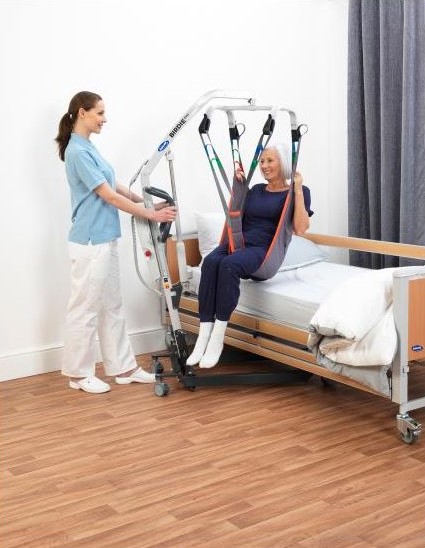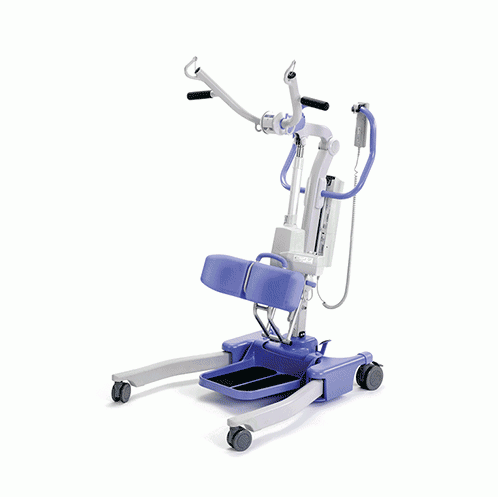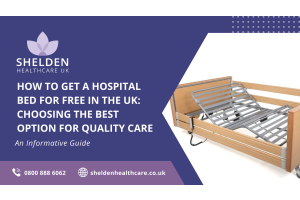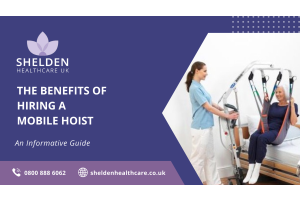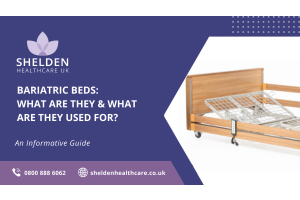How Many Carers Should Use Stand Aid Equipment?
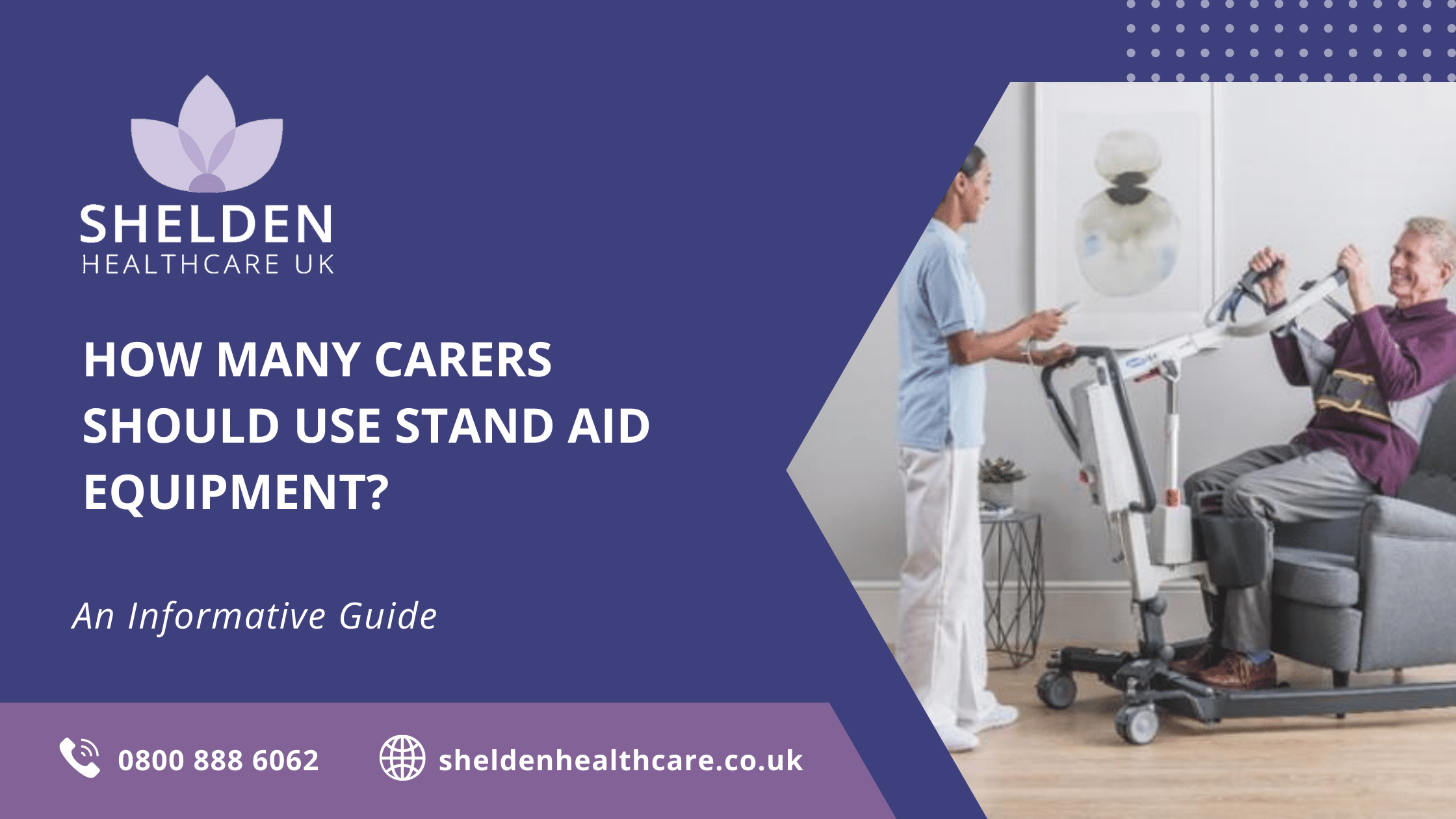
If you or someone you are caring for need help standing, a stand aid can be a lifesaver. But with so many different types on the market, which one is right for you?
This comprehensive guide will walk you through different options and help you decide which option is the best fit for your needs. We'll also cover important information such as how many carers to use stand aid with.
So read on to learn more about these handy devices and find the perfect one for you.
What is a Stand Aid?
A stand aid is a type of transfer aid equipment that helps people who are unable to stand on their own to be moved from one place to another by enabling them to be in a standing position whilst being supported.
It consists of a sling that goes around the patient's body and two handles that allow care providers to lift and move the person. Stand aids can be used to transfer a person from different places, such as a hospital bed to a riser recliner chair, or from a wheelchair to a toilet.
They can be used in residential care settings, hospitals and a patient's own home and are the ideal solution for patients who require supportive assistance, have limited mobility, are bed bound or have ill health and need to complete standing exercises.
How Many Carers to Use a Stand Aid
The number of carers needed to use a standing aid will depend on the weight of the person being transferred. For example, if the person is light, only one carer may be needed. However, for plus-sized patients, two people or more may be needed to lift and move them.
A risk assessment should always be carried out before using moving and handling equipment. Contact your local council for support to check if there is a legal requirement in your area.
Types of Stand Aids
There are two main types of standing aids, electric and manual.
Electric
Electric stand aids are a type of transfer aid that is powered by hoist batteries and have a motor that helps to lift the person. This type of mechanical assistance equipment is ideal for people who have very limited mobility, have a prolonged illness, are unable to stand on their own for long periods or who need to be transferred frequently.
Manual
Manual standing aids, on the other hand, are transfer aids that do not have a motor and must be lifted by the carers by using manual handling. They are best suited for people who only need help to stand occasionally or for a short period.
Mechanised vs Non-Mechanised Stand Aids
A mechanised stand aid is an assistive device operated by a motor, while non-mechanised standing aids rely on manual power to lift and lower the patient.
Both types of equipment have their own advantages and disadvantages. Mechanised stand aids are generally more expensive than their manual counterparts and you need to be careful of a drained battery, but they offer a greater degree of independence for the user. A non-mechanised stand aid, on the other hand, is typically less expensive, easier to maintain and may be easier to operate for some users who are comfortable with manual patient handling.
When choosing a stand aid, it is imperative to consider the needs of the individual patient so they are not put at risk. Some individuals may prefer the independence offered by a mechanised stand aid, while others may find that a non-mechanised stand aid is more suited to their needs. Ultimately, the decision should be made based on what will best meet the needs of the patient and allow for safe moving.
Do you need standing assistance?
If you have difficulty standing up from a seated position, supporting your own weight while standing or if you experience pain when standing for long periods of time, you may benefit from using a standing aid.
They can help to take the strain off of your muscles and joints, and can provide support and increased confidence for your standing ability when you need it most.
Patient Lifting: Best Practices and Tips
There are a few best practices to keep in mind for health and safety reasons when using stand aids and other transfer aids. First, always consult with your healthcare provider before using mobility aids, to make sure they are the right choice for you.
Second, be sure to read the manufacturer's instructions carefully before using the device.
And finally, always use caution when lifting someone with a stand aid hoist, and be sure to have the correct number of people assisting you.
Tips for Patient Lifting
There are a few tips to keep in mind when lifting someone with a standing aid. By following these tips, you can ensure a safe and successful experience using a stand aid.
- Position: be sure to position the stand aid close to the person you are lifting. This will help to avoid any unnecessary strain on your own body.
- Lifting technique: when lifting the patient, be sure to use proper lifting techniques. This means using your legs, not your back, to lift the person.
- Stability: When lifting someone with a stand aid, it is important to keep their trunk stable. This means keeping their head and shoulders in alignment with their hips and knees. You should also avoid jerking or twisting motions, which can put strain on the person's muscles and joints. Finally, be sure to use slow and smooth movements when lifting or lowering the person in the stand aid.
- Communication: be sure to communicate with the other people who are assisting you. This will help to ensure that everyone is on the same page, and that the person is lifted safely and correctly.
Single-User Hoist Systems
If you are lifting someone by yourself, it is important to choose a single-user hoist system. This type of system is designed for use by one person, and can be operated with one hand. This makes it ideal for people who need to lift someone by themselves.
When choosing a single-user hoist system, it is important to carry out a risk assessment and consider the weight capacity, height adjustment, and mobility. Weight capacity is critical to consider if you are lifting someone who is overweight or obese.
Height adjustment is key for people of different heights, so that the hoist can be adjusted to fit your needs. And finally, mobility should be considered if you plan on using the hoist in multiple locations, or if you need to transport it.
Choosing the Right Stand Aid
There are many different types of stand aids on the market, so how do you know which one is right for you or your loved one? When choosing a stand aid, it is important to consult with your healthcare provider. They will be able to help you determine which type of device is right for you. No matter which type you choose, it will need regular maintenance to lower the risk associated with use and ensure it is operating safely and efficiently.
The first step is to complete a risk assessment or occupational therapy assessment and consider what type of mobility assistance is needed. For example, if someone has limited mobility, such as difficulty standing up from a seated position, a sit-to-stand lift might be the best option. These devices use a sling to help transfer the individual from a sitting to a standing position.
It's also important to think about the individual's body weight when choosing a stand aid. Some devices have weight limits that must be considered when making your selection, you may need to consider using bariatric equipment. Finally, consider any special features that might be needed such as height adjustable legs or caster wheels. These features can make using the stand aid easier for both the individual and the carer.
FAQs
Do you need 2 carers to use a mobile hoist?
No, you don't need two carers to use a mobile hoist. There are many patient hoists on the market that can be operated by a single carer. However, if possible, it is always a good idea to have at least two carers present when using a hoist, in case one person needs to take a break or gets tired.
Can a mobile hoist be used by one person?
They can be used by one person, but it is recommended that two people operate it for safety reasons. If you are using a one by yourself, make sure to read the manufacturer's instructions carefully and follow all safety precautions before attempting a transfer. Be sure to read How Many Care Workers Are Recommended For Hoist Transfers? for further information.
Is double handed care always necessary?
No, but it is generally recommended for risk prevention. Having two carers helps to distribute the weight of the person being lifted and makes the process smoother overall by providing extra support. It also means that if one carer needs to take a break, the other can continue lifting.
Can a stand aid be used on carpet?
Yes, a stand aid can be used on carpet. However, it is important to choose a device that is designed for use on carpet. Otherwise, the stand aid may not move smoothly during the transfer, and could cause injury or damage the carpet.
The Bottom Line
Stand aids can be a valuable tool and great resource to support people who have difficulty standing on their own. There are a variety of different types of stand aids available, so it is important to choose the one that best meets your needs.
Always consult with your healthcare provider before using a standing aid, and be sure to follow the manufacturer's instructions carefully. When lifting someone with a stand aid, be sure to use proper lifting techniques and have the correct number of people assisting you. With these tips in mind, you can safely and effectively use a stand aid to help someone stand. Contact us today for more information, our team of experts at Shelden Healthcare will be more than happy to provide assistance.






